
St. Peter Port: A Charming Harbor Town Steeped in History
Discover the historic charm and vibrant culture of St. Peter Port, Guernsey's picturesque capital, known for its stunning harbor, rich history, and delightful local cuisine.
Nestled on the eastern coast of the island of Guernsey, St. Peter Port is a picturesque harbor town that offers a blend of historical allure and modern charm. This capital city is known for its cobbled streets, stunning seafront, and vibrant cultural scene. The town's history dates back to the Roman era, and its strategic location has made it a significant port for centuries. One of the most iconic landmarks is Castle Cornet, a historic fortress that has guarded the harbor for over 800 years. Visitors can explore its museums, gardens, and enjoy breathtaking views of the surrounding sea. St. Peter Port is also a gateway to exploring the island's natural beauty. The town's bustling harbor is the starting point for boat trips to the nearby islands of Herm and Sark, both renowned for their unspoiled landscapes and tranquil beaches. The town itself boasts a variety of dining options, from cozy cafes to high-end restaurants, offering local seafood and international cuisine. For those interested in shopping, St. Peter Port offers a mix of independent boutiques and well-known brands. The town's markets and shops are perfect for picking up unique souvenirs and local products, such as Guernsey knitwear and delicious local produce. The blend of old and new, combined with the friendly local atmosphere, makes St. Peter Port a must-visit destination for travelers.
Local tips in St. Peter Port
- Visit Castle Cornet early in the morning to avoid crowds and enjoy the peaceful atmosphere.
- Take a day trip to the nearby islands of Herm and Sark for pristine beaches and scenic walks.
- Explore the town on foot to fully appreciate the charming cobbled streets and historic architecture.
- Try local seafood dishes at the harbor-side restaurants for a taste of Guernsey's culinary delights.
- Check out the local markets for unique souvenirs and fresh local produce.
St. Peter Port: A Charming Harbor Town Steeped in History
Nestled on the eastern coast of the island of Guernsey, St. Peter Port is a picturesque harbor town that offers a blend of historical allure and modern charm. This capital city is known for its cobbled streets, stunning seafront, and vibrant cultural scene. The town's history dates back to the Roman era, and its strategic location has made it a significant port for centuries. One of the most iconic landmarks is Castle Cornet, a historic fortress that has guarded the harbor for over 800 years. Visitors can explore its museums, gardens, and enjoy breathtaking views of the surrounding sea. St. Peter Port is also a gateway to exploring the island's natural beauty. The town's bustling harbor is the starting point for boat trips to the nearby islands of Herm and Sark, both renowned for their unspoiled landscapes and tranquil beaches. The town itself boasts a variety of dining options, from cozy cafes to high-end restaurants, offering local seafood and international cuisine. For those interested in shopping, St. Peter Port offers a mix of independent boutiques and well-known brands. The town's markets and shops are perfect for picking up unique souvenirs and local products, such as Guernsey knitwear and delicious local produce. The blend of old and new, combined with the friendly local atmosphere, makes St. Peter Port a must-visit destination for travelers.
When is the best time to go to St. Peter Port?
Iconic landmarks you can’t miss
Castle Cornet
Explore Castle Cornet, a historic fortress and museum in Guernsey offering rich maritime history, stunning views, and engaging exhibits for all visitors.
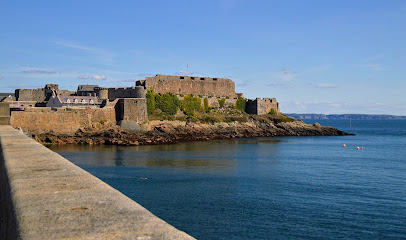
Saumarez Park
Discover the beauty and tranquility of Saumarez Park, Guernsey's premier outdoor destination, perfect for relaxation and family fun.

Hauteville - Victor Hugo House
Explore the enchanting Hauteville House, the former home of Victor Hugo, where literature and history intertwine in a picturesque Guernsey setting.
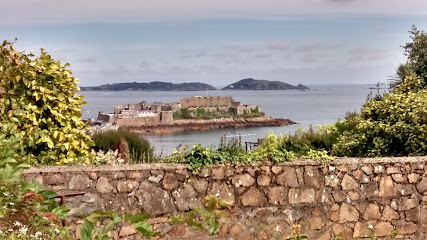
German Occupation Museum
Discover the poignant history of Guernsey's German occupation at the German Occupation Museum, where stories of resilience and hardship come to life.

Sausmarez Manor
Explore the historic Sausmarez Manor in Guernsey, a beautiful manor house surrounded by exquisite gardens and rich cultural heritage.

German Underground Hospital
Uncover the secrets of World War II at the German Underground Hospital, a historical site in Guernsey that reveals the past beneath the surface.

Best Western Hotel De Havelet
Experience the comfort and charm of Best Western Hotel De Havelet, your ideal base for exploring the stunning beauty and rich history of Guernsey.

Grandes Rocques Beach
Experience the serene beauty of Grandes Rocques Beach, a family-friendly destination on Guernsey's stunning west coast, perfect for relaxation and adventure.

Fort Grey Shipwreck Museum
Explore the maritime heritage at Fort Grey Shipwreck Museum, where history and stunning coastal views come together in Guernsey.

Guernsey Tourist Information Centre
Explore Guernsey with ease at the Tourist Information Centre, your go-to resource for maps, tips, and local insights.

Town Church of St. Peter Port
Discover the Town Church of St. Peter Port, a stunning Protestant church rich in history and architectural beauty, nestled in the heart of Guernsey.

Fort Hommet
Explore the historical marvel of Fort Hommet in Guernsey, where rich military heritage meets stunning coastal views.

National Trust of Guernsey - Folk and Costume Museum
Discover the rich cultural heritage of Guernsey at the Folk and Costume Museum, where history comes alive in Saumarez Park.

St. Peter Port Harbour
Experience the scenic beauty and vibrant culture at St. Peter Port Harbour, a must-visit marina in Guernsey for every traveler.

St Georges
Discover the charm of St. George's in Guernsey, a cozy bed & breakfast with stunning coastal views and warm hospitality.
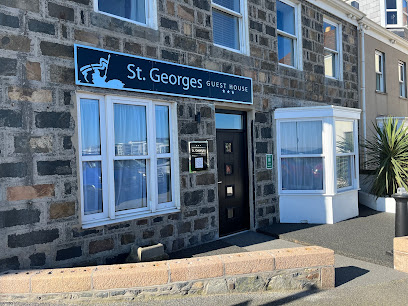
Unmissable attractions to see
Hauteville House
Discover the charm of Hauteville House, the enchanting home of Victor Hugo in Guernsey, where literature and history come alive.

German Occupation Museum
Explore the German Occupation Museum in Guernsey for an insightful journey through the island's World War II history and its impact on local life.

German Underground Hospital
Discover the haunting history of the German Underground Hospital in Guernsey, a remarkable WWII site revealing the island's unique past.

Town Church St. Peter Port
Discover the stunning architecture and rich history of the Town Church of St. Peter Port, a must-visit Protestant landmark in Guernsey.

National Trust of Guernsey - Ron Short Walk
Explore the serene beauty of the National Trust of Guernsey - Ron Short Walk, where nature's tranquility meets stunning coastal views.

The Pat Merriman Peace Garden
Discover serenity and natural beauty at The Pat Merriman Peace Garden in Guernsey, a perfect retreat for relaxation and reflection.

Weighbridge Mast
Discover the Weighbridge Mast in Guernsey, a historic maritime landmark offering stunning coastal views and a glimpse into the island's rich nautical heritage.

Essential places to dine
Dix Neuf
Experience culinary excellence at Dix Neuf in Guernsey – where every meal tells a story through flavor.

Slaughterhouse - Randalls
Experience exquisite dining at Slaughterhouse - Randalls in Guernsey, where local flavors meet contemporary cuisine amidst stunning seaside views.

Thomas De La Rue
Discover Thomas De La Rue: A charming gastropub in Guernsey offering delicious food, drinks, and vibrant events for an unforgettable experience.

Octopus Restaurant
Experience exquisite seafood dining at Octopus Restaurant in St. Peter Port with stunning views of Havelet Bay.

Christies Brasserie
Discover exceptional cuisine at Christies Brasserie in Guernsey—where local flavors meet modern culinary artistry.

The Terrace Garden Cafe
Discover delightful Thai cuisine at The Terrace Garden Cafe in Guernsey - where every bite takes you on a flavorful journey.

Ship & Crown
Discover exquisite dining at Ship & Crown in Guernsey – where local flavors meet stunning coastal views.

Dhaka
Explore Dhaka: A bustling metropolis rich in culture, history, and mouth-watering Bangladeshi cuisine.

The Boathouse
Discover coastal charm at The Boathouse – where exquisite seafood meets stunning waterfront views in Guernsey.

China Red
Experience the vibrant flavors of authentic Chinese cuisine at China Red in Guernsey - a culinary delight for every food lover.

Coco
Discover Coco: A charming brasserie in Guernsey offering delightful breakfast experiences with stunning seaside views.

La Perla Restaurant
Experience authentic Guernsey flavors at La Perla Restaurant - where fresh ingredients meet warm hospitality.
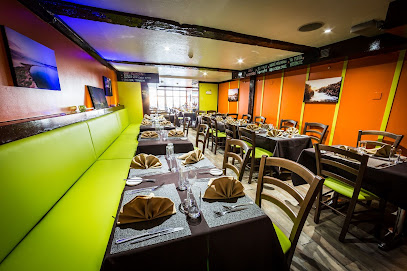
Le Nautique Restaurant
Experience exquisite seafood dining at Le Nautique Restaurant in St Peter Port, where fresh ingredients meet stunning harbor views.

The Hook
Discover gourmet seafood and steak delights at The Hook in Guernsey – where every meal is an unforgettable culinary adventure.
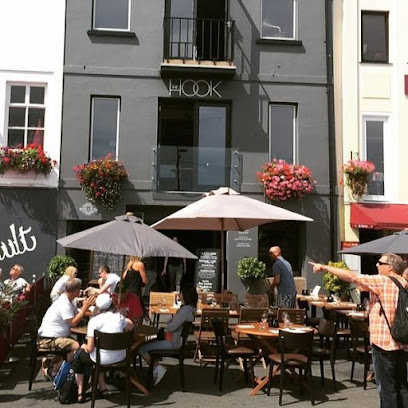
Café Emilia
Discover the warmth and flavor of Café Emilia in Guernsey—your perfect breakfast spot with delightful dishes in a cozy atmosphere.

Markets, malls and hidden boutiques
B&Q St Peter Port - Guernsey
Discover the best in home improvement at B&Q St Peter Port, Guernsey's go-to store for all DIY and seasonal needs.

Coop Locale The Market
Experience the best of local produce and gourmet goods at Coop Locale The Market, Guernsey's beloved supermarket destination.

Coop Royal Terrace
Explore the vibrant offerings of Coop Royal Terrace, your go-to supermarket for local and international delights in Guernsey.

Guernsey Candles
Discover the enchanting world of handcrafted candles at Guernsey Candles, where each scent tells a story of the island's charm.

Just Games
Discover the ultimate gaming paradise at Just Games in Guernsey, where every gamer finds their perfect match in games, collectibles, and community.

Marks & Spencer
Discover the charm of Marks & Spencer in Guernsey, where quality meets convenience in a delightful shopping experience.

Creaseys
Discover Creaseys in Guernsey, a delightful department store and café offering unique shopping and a cozy place to unwind with local flavors.

Candie Cache
Discover Candie Cache in Guernsey - your go-to convenience store for all essentials, open daily for your shopping needs.

Iris & Dora Studios
Immerse yourself in creativity at Iris & Dora Studios, where pottery and painting unite in the heart of Guernsey's artistic community.

Mappin & Webb
Discover luxury and craftsmanship at Mappin & Webb, Guernsey's premier watch store, offering exquisite timepieces and exceptional service.
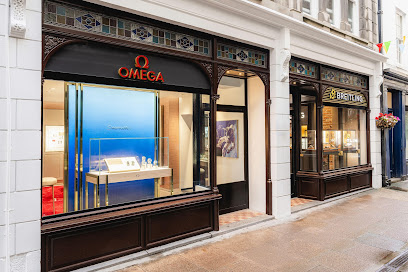
Lexicon
Explore Lexicon, Guernsey's charming department store, offering a unique shopping experience with local products and exceptional service.

The Original Alternative
Explore natural healing at The Original Alternative, Guernsey’s premier herbal medicine store offering expert advice and a wide selection of herbal products.

Millets
Discover outdoor adventure gear at Millets, your go-to shop for high-quality clothing and equipment in Guernsey.

Model Shop
Explore a world of creativity at the Model Shop in Guernsey, featuring an extensive collection of scale models and toys for all ages.

National Trust of Guernsey Victorian Shop and Parlour at 26 Cornet Street
Explore unique Victorian artifacts and support local heritage at the National Trust of Guernsey Victorian Shop and Parlour.

Essential bars & hidden hideouts
Dix Neuf
Discover Dix Neuf in Guernsey: a vibrant brasserie offering exquisite food, fine wines, and a warm atmosphere for breakfast, lunch, and dinner.

The Rockmount - Randalls
Discover The Rockmount, a coastal gastropub in Guernsey offering fresh local cuisine, stunning views, and a vibrant atmosphere for all diners.
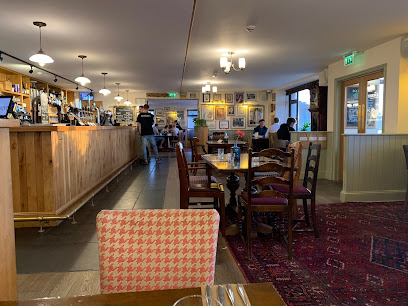
Slaughterhouse - Randalls
Experience the culinary art at Slaughterhouse - Randalls, a premier restaurant in Guernsey offering fresh, local ingredients and stunning harbor views.
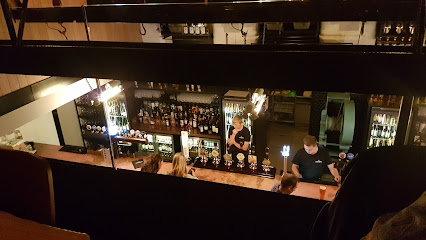
Thomas De La Rue
Discover the perfect blend of tradition and modernity at Guernsey's premier gastropub, Thomas De La Rue, where delicious food and drinks await.

Ship & Crown
Experience the best of Guernsey at Ship & Crown, a cozy bar and restaurant with stunning coastal views and delicious cuisine.

Nineteen Bar & Grill
Savor delicious steaks and vibrant atmosphere at Nineteen Bar & Grill in Guernsey, a top choice for food lovers and social gatherings.

The Cock and Bull
Experience the vibrant atmosphere of The Cock and Bull in Guernsey, where local flavors, live music, and hearty meals come together in a welcoming pub setting.

The Hook
Indulge in an extraordinary dining experience at The Hook, Guernsey's premier bar and restaurant known for its fresh seafood and creative cocktails.

The Doghouse
Experience the best of Guernsey at The Doghouse, a lively gastropub with grilled delights, live music, and a vibrant sports bar atmosphere.

CORNERSTONE Social House
Discover the best of Guernsey's culinary scene at CORNERSTONE Social House, a lively gastropub with a delightful menu and inviting atmosphere.

Albion House Tavern
Experience the heart of Guernsey’s pub culture at Albion House Tavern - a perfect blend of tradition and modern charm.

The Swan Inn
Experience the charm of The Swan Inn, Guernsey's historic bar, offering local drinks and a cozy atmosphere perfect for unwinding after exploring.

Dorset Arms
Discover the Dorset Arms, a cozy pub in Guernsey, offering delightful food and drinks in a welcoming atmosphere.

The Red Lion - Randalls
Discover the charm of The Red Lion in Guernsey, a cozy pub with great ales, delicious food, and a welcoming atmosphere perfect for tourists.
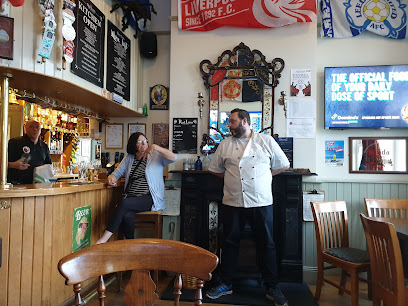
Harbour Lights
Discover the vibrant atmosphere and stunning views at Harbour Lights, the perfect pub and bar in St. Peter Port for tourists seeking local flavor.
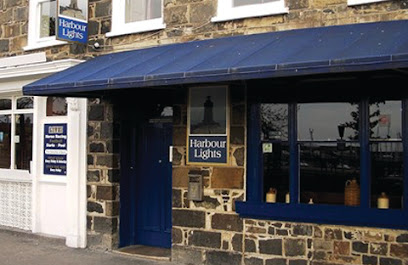
Local Phrases
-
- HelloSalut
[sa-LOO] - GoodbyeAu revoir
[o re-VWAH] - YesOui
[WEE] - NoNon
[NON] - Please/You're welcomeS'il vous plaît/De rien
[seel voo PLEH/duh RYAN] - Thank youMerci
[MEHR-see] - Excuse me/SorryExcusez-moi/Désolé
[ex-kew-ZAY mwah/day-zoh-LAY] - How are you?Comment ça va?
[koh-mohn sah vah] - Fine. And you?Bien. Et toi?
[byen. ay twah] - Do you speak English?Parlez-vous anglais?
[par-lay voo ahn-glay] - I don't understandJe ne comprends pas
[zhuh nuh kohm-prahn pah]
- HelloSalut
-
- I'd like to see the menu, pleaseJe voudrais voir le menu, s'il vous plaît
[zhuh voo-dray vwahr luh muh-NEW, seel voo PLEH] - I don't eat meatJe ne mange pas de viande
[zhuh nuh mahnj pah duh vee-ahnd] - Cheers!Santé!
[sahn-TAY] - I would like to pay, pleaseJe voudrais payer, s'il vous plaît
[zhuh voo-dray peh-YAY, seel voo PLEH]
- I'd like to see the menu, pleaseJe voudrais voir le menu, s'il vous plaît
-
- Help!Aidez-moi!
[ay-day mwah] - Go away!Allez-vous en!
[ah-lay voo zahn] - Call the Police!Appelez la police!
[ah-puh-lay lah poh-LEES] - Call a doctor!Appelez un médecin!
[ah-puh-lay uh meh-duh-SAN] - I'm lostJe suis perdu
[zhuh swee pair-DU] - I'm illJe suis malade
[zhuh swee mah-LAHD]
- Help!Aidez-moi!
-
- I'd like to buy...Je voudrais acheter...
[zhuh voo-dray ah-shuh-TAY] - I'm just lookingJe regarde juste
[zhuh ruh-GAHRD zhewst] - How much is it?Combien ça coûte?
[kohm-BYEN sah koot] - That's too expensiveC'est trop cher
[say troh sher] - Can you lower the price?Pouvez-vous baisser le prix?
[poo-veh voo bay-SAY luh pree]
- I'd like to buy...Je voudrais acheter...
-
- What time is it?Quelle heure est-il?
[kell uhr eh-TEEL] - It's one o'clockIl est une heure
[eel ehz oon uhr] - Half past (10)Dix et demi
[dees ay duh-MEE] - MorningMatin
[mah-TAN] - AfternoonAprès-midi
[ah-pray mee-DEE] - EveningSoir
[swahr] - YesterdayHier
[yehr] - TodayAujourd'hui
[oh-zhoor-DWEE] - TomorrowDemain
[duh-MAN] - 1Un
[uh] - 2Deux
[duh] - 3Trois
[twah] - 4Quatre
[kat] - 5Cinq
[sank] - 6Six
[sees] - 7Sept
[sett] - 8Huit
[wheat] - 9Neuf
[nuhf] - 10Dix
[dees]
- What time is it?Quelle heure est-il?
-
- Where's a/the...?Où est le/la...?
[oo eh luh/lah] - What's the address?Quelle est l'adresse?
[kell eh lah-dress] - Can you show me (on the map)?Pouvez-vous me montrer (sur la carte)?
[poo-veh voo muh mohn-TRAY (sur lah kart)] - When's the next (bus)?Quand est le prochain (bus)?
[kahn eh luh proh-shahn (bus)] - A ticket (to ....)Un billet (pour ....)
[uhn bee-YAY (poor)]
- Where's a/the...?Où est le/la...?
History of St. Peter Port
-
St. Peter Port's history dates back to Roman times when it served as a strategic point for the Romans. Evidence of Roman presence includes ancient pottery and remains of buildings, suggesting that this small port town played a crucial role in trade and military operations.
-
During the medieval period, St. Peter Port flourished as a hub of commerce and trade. The town's natural harbor made it an ideal location for merchants and traders traveling between England and France. The construction of Castle Cornet in the 13th century further reinforced the town's strategic importance.
-
Castle Cornet, built on a tidal island, has been a focal point of St. Peter Port's history. Originally constructed in the 13th century, it has withstood numerous sieges, including during the English Civil War. Today, it houses several museums and offers panoramic views of the harbor.
-
St. Peter Port, like the rest of Guernsey, was occupied by German forces during World War II from 1940 to 1945. The town bears many scars from this period, including bunkers, fortifications, and memorials that serve as poignant reminders of the island's wartime experiences.
-
May 9, 1945, marked the liberation of St. Peter Port from German occupation. This day is celebrated annually as Liberation Day, a significant event in the town's cultural calendar. Festivities include parades, music, and reenactments, drawing both locals and visitors to commemorate this historic day.
-
St. Peter Port boasts an array of historical architecture, from the medieval Town Church to the Georgian and Victorian buildings lining its narrow streets. These structures reflect the town's rich heritage and its evolution over centuries, offering a visual journey through time.
-
Famed French writer Victor Hugo spent 15 years in exile in St. Peter Port, living in Hauteville House. This period saw the creation of some of his most influential works, including 'Les Misérables'. Today, Hauteville House is a museum, preserving Hugo's legacy and his impact on the town.
-
St. Peter Port's maritime heritage is celebrated through its bustling harbor, maritime museums, and annual events like the Guernsey International Sea Angling Festival. The town's relationship with the sea has shaped its culture, economy, and way of life for centuries.
-
Today, St. Peter Port blends its rich historical past with modern amenities. It serves as the commercial and cultural heart of Guernsey, with its cobbled streets, vibrant markets, and a lively waterfront that attracts tourists from around the world.
St. Peter Port Essentials
-
St. Peter Port is the capital of Guernsey, one of the Channel Islands. The most common way to reach St. Peter Port is by air or sea. Guernsey Airport (GCI) is located about 4 miles from St. Peter Port and has regular flights from various UK cities such as London, Manchester, and Southampton, as well as seasonal flights from European destinations. There are also ferry services from the UK (Poole and Portsmouth) and France (St. Malo) operated by Condor Ferries. The ferry terminal is conveniently located in St. Peter Port itself.
-
St. Peter Port is small and easily navigable by foot. For longer distances, the local bus service operated by CT Plus offers a convenient and economical way to travel around the island. Taxis are also readily available, and car rentals are an option for those wanting more flexibility. However, parking can be challenging in central St. Peter Port. Bicycles and scooters are popular for shorter trips and can be rented from various outlets in town.
-
The official currency in Guernsey is the Guernsey Pound (GGP), which is on par with the British Pound Sterling (GBP). Both currencies are used interchangeably. Credit and debit cards are widely accepted in hotels, restaurants, and shops. ATMs are plentiful, especially in St. Peter Port. It is advisable to carry some cash for smaller establishments or markets that may not accept card payments.
-
St. Peter Port is generally very safe for tourists. Violent crime is rare, but petty theft, such as pickpocketing, can occur in crowded areas, especially during peak tourist seasons. The High Street and the harbor area are generally safe, but it’s always wise to stay vigilant and keep an eye on personal belongings. Avoid isolated areas late at night.
-
In case of emergency, dial 999 or 112 for immediate assistance from police, fire, or medical services. The Princess Elizabeth Hospital, located a short drive from St. Peter Port, provides comprehensive medical care. Pharmacies are also available for minor health issues. It is advisable to have travel insurance that covers medical emergencies.
-
Fashion: Do dress neatly and comfortably, but avoid overly revealing clothing, especially in religious sites. Religion: Do respect local customs and religious practices. Public Transport: Do have the exact fare ready when using buses, as drivers may not provide change. Don't eat or drink on public transport. Greetings: Do greet people with a friendly 'Hello' or 'Good day.' Handshakes are also common. Eating & Drinking: Do try local delicacies like Guernsey Gâche and seafood. Don't rush your meals; take time to enjoy the local cuisine.
-
To experience St. Peter Port like a local, visit the Market Square where you can buy fresh produce and local goods. Explore the narrow, cobbled streets and discover hidden gems like small boutiques and cafes. Engage with locals at pubs and restaurants; they are often happy to share stories and tips about the best places to visit. Don’t miss the weekly Town Carnival in summer, which showcases local music, dance, and crafts. For a unique experience, take a walk along the cliff paths for stunning views of the coastline.
Trending Landmark in St. Peter Port
-
Castle Cornet
-
Saumarez Park
-
Hauteville - Victor Hugo House
-
German Occupation Museum
-
Sausmarez Manor
-
German Underground Hospital
-
Best Western Hotel De Havelet
-
Grandes Rocques Beach
-
Fort Grey Shipwreck Museum
-
Guernsey Tourist Information Centre
-
Town Church of St. Peter Port
-
Fort Hommet
-
National Trust of Guernsey - Folk and Costume Museum
-
St. Peter Port Harbour
-
St Georges
Nearby Cities to St. Peter Port
-
Things To Do in St. Sampson
-
Things To Do in St. Andrew
-
Things To Do in Vale
-
Things To Do in St. Martin
-
Things To Do in Castel
-
Things To Do in Forest
-
Things To Do in St. Saviour
-
Things To Do in St. Anne
-
Things To Do in St. Ouen
-
Things To Do in St. Peter
-
Things To Do in St. Brelade
-
Things To Do in St. Lawrence
-
Things To Do in St. Aubin
-
Things To Do in Trinity
-
Things To Do in St. Helier









